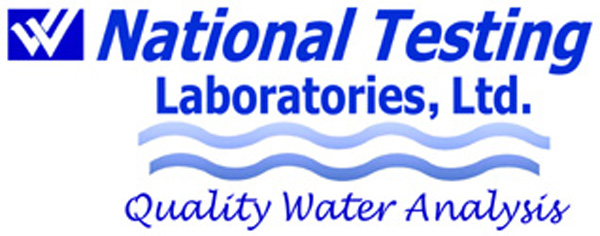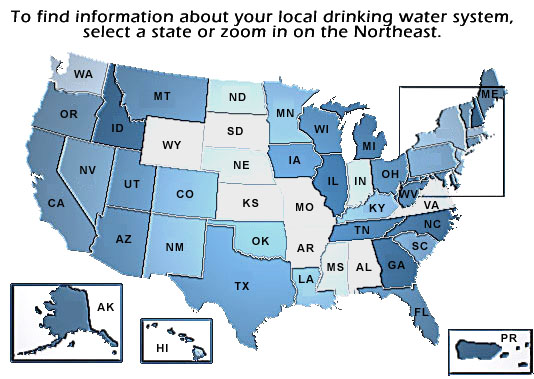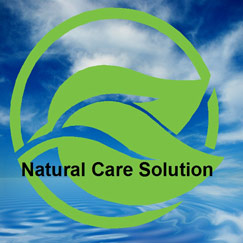Total Dissolved
Solids - TDS is directly related to the purity of water
and the quality of water purification systems and affects
everything
that consumes, lives in, or uses water.
What Are Total Dissolved Solids -
TDS?
"Dissolved solids" refer to
any minerals, salts, metals, cations or anions dissolved in
water. This includes anything present in water other than the
pure water (H20) molecule and suspended solids. (Suspended
solids are any particles/substances that are neither dissolved
nor settled in the water, such as wood
pulp.)
Total Dissolved Solids (TDS) are the total
amount of mobile charged ions, including minerals, salts or
metals dissolved in a given volume of water, expressed in units
of mg per unit volume of water (mg/L), also referred to as
parts per million (ppm).
In general, the total
dissolved solids concentration is the sum of the cations
(positively charged) and anions (negatively charged) ions in
the water.

Parts per Million (ppm) is the
weight-to-weight ratio of any ion to water.
Total Dissolved Solids - TDS is directly
related to the purity of water and the quality of water
purification systems and affects everything that consumes,
lives in, or uses water, whether organic or inorganic, whether
for better or for worse.
A TDS meter is based on the
electrical conductivity (EC) of water. Pure H20 has virtually
zero conductivity. Conductivity is usually about 100 times the
total cations or anions expressed as equivalents. TDS is
calculated by converting the EC by a factor of 0.5 to 1.0 times
the EC, depending upon the levels. Typically, the higher the
level of EC, the higher the conversion factor to determine the
TDS. NOTE - While a TDS meter is based on conductivity, TDS and
conductivity are not the same thing. For more information on
this topic, please see our FAQ page.
Where Do Dissolved
Solids Come From?
Some dissolved solids come
from organic sources such as leaves, silt, plankton, and
industrial waste and sewage. Other sources come from runoff
from urban areas, road salts used on street during the winter,
and fertilizers and pesticides used on lawns and farms.
Dissolved solids also come
from inorganic materials such as rocks and air that may contain
calcium bicarbonate, nitrogen, iron phosphorous, sulfur, and
other minerals. Many of these materials form salts, which are
compounds that contain both a metal and a nonmetal. Salts
usually dissolve in water forming ions. Ions are particles that
have a positive or negative charge.
Water may also pick up metals
such as lead or copper as they travel through pipes used to
distribute water to consumers.
Note that the efficacy of
water purifications systems in removing total dissolved solids
will be reduced over time, so it is highly recommended to
monitor the quality of a filter or membrane and replace them
when required.
Why Should You Measure
the TDS Level in Your Water?
The EPA Secondary Regulations
advise a maximum contamination level (MCL) of 500mg/liter (500
parts per million (ppm)) for TDS. Numerous water supplies
exceed this level. When TDS levels exceed 1000mg/L it is
generally considered unfit for human consumption. A high level
of TDS is an indicator of potential concerns, and warrants
further investigation. Most often, high levels of TDS are
caused by the presence of potassium, chlorides and sodium.
These ions have little or no short-term effects, but toxic ions
(lead arsenic, cadmium, nitrate and others) may also be
dissolved in the water.
Even the best water
purification systems on the market require monitoring for TDS
to ensure the filters and/or membranes are effectively removing
unwanted particles and bacteria from your
water.
Why is pure water
healthier to drink?
We are all affected by toxic
minerals and chemicals found in the air and in our food on a
daily basis. Water is the only way the body has to flush out
these toxins. The purer the water is to start with, the higher
its capacity to collect and cleanse these compounds from the
body.¹
Why is it especially
important for children to consume pure
water?
A child’s immune system and
detoxification system are still developing throughout early
childhood and teen years. Exposure to even very low levels of
toxic chemicals or lead in drinking water at a young age can
lead to increased risks of degenerative diseases and learning
disorders in later years. Since many of the crucial defense
systems that help protect adults from disease and environmental
pollutants are not fully developed in children, they are much
more sensitive to contaminants. A child consumes 3 times as
much water per pound of body weight than an adult does, so they
get a much bigger dose of the contaminants in our water. Their
developing bodies are simply much more sensitive.²
Currently, the health
standards that determine how much and what levels of
contaminants we are permitted to consume in our drinking water
are all based on the potential effects on adults.
How can water with
high TDS be undesirable or
harmful?
It may taste bitter, salty, or
metallic and may have unpleasant odors
High TDS water is less thirst
quenching.
High TDS interferes with the
taste of foods and beverages, and makes them less desirable to
consume.
Some of the individual mineral
salts that make up TDS pose a variety of health hazards. The
most problematic are Nitrates, Sodium, Sulfates, Barium,
Cadmium, Copper, and Fluoride.
According to Dr. Allen E.
Banik with Carlson Wade, "If a person drinks 2 pints of water a
day, this will total 4500 gallons of water passing through his
body over a 70 year span. If the water is not totally pure,
this 4500 gallons will include 200-300 pounds of rock that the
body cannot utilize. Most will be eliminated through excretory
channels. But some of this will stay in the body, causing
stiffness in the joints, hardening of the arteries, kidney
stones, gall stones and blockages of arteries, microscopic
capillaries and other passages in which liquids flow through
our entire body.³"
I'll make a modification
to the statement by Dr. Banik and Wade. Some of the Total
Dissolved Solids may be good minerals calcium, magnesium,
selenium, zinc, etc., and may have a positive effect on
your health. Some to the TDS may be toxic levels of
chloride, sulfate, iron, lead, fluoride, etc., and may have a
negative effect on your health.
The only way to know if Total
Dissolved Solids may have a negative effect on your and your
families body is to a water test:
Reference Sources
1. Waterwarning.com (Charles
Strand)
2. Ibid
3. “Water can undermine your
health,” by Norm W. Walker
4. “Your water and Your Health,” by Dr. Allen E. Banik
with Carlson Wade
Return
from Total Dissolved Solids - TDS to How to Test
Water
| 








